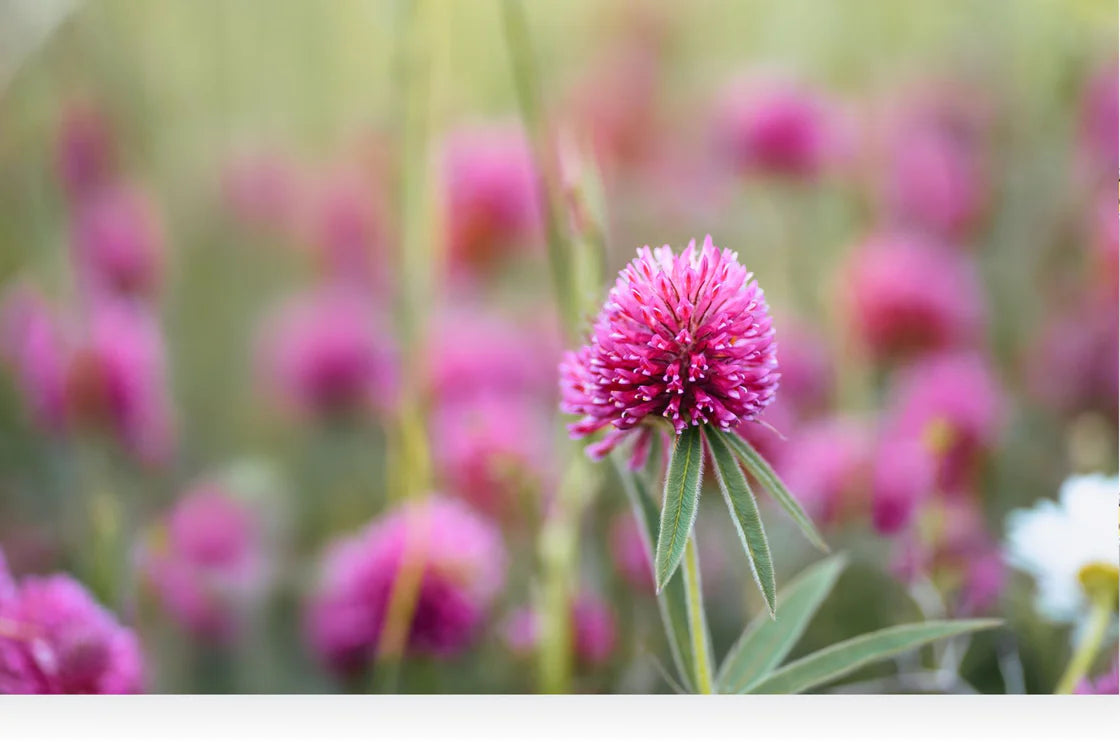Plant oestrogens, also known as phytoestrogens, boast a number of benefits which are linked to health and wellbeing – specifically with regards to mimicking the boosting the body’s access to hormones which regulate everything from mood to heart health, bone strength, and more.
For many consumers, taking some form of supplement which contains phytoestrogen equates to enhancing the health of natural hormones and the benefits which come from a hormonal balance within the body. And in this blog post, we’re considering not one but two different sources of this phytoestrogen – or plant oestrogen – one which is found in red clover and the other which is found in soy.
Why does the body need plant oestrogen?
A plant oestrogen or phytoestrogen is a form of dietary oestrogen which is absorbed through food, and which contributes towards the natural function and benefits of oestrogen which occurs naturally in the body.
For example, with phytoestrogens supporting the natural functions of oestrogen, ingesting supplements which contain these phytoestrogens can contribute towards improving and maintaining bone density, relieving the symptoms of menopause, managing cholesterol, and even helping the body to fight cancer.
Why? Because phytoestrogens, when ingested and digested, mimic and enhance many of the natural occurring benefits of oestrogen and other hormones.
With that said, what’s the difference between that found in red clover and in soy?
Phytoestrogens found in different ingredients – and why it matters
One specific type of phytoestrogen which many supplements provide is an isoflavone, which many consider to be a powerhouse nutrient which binds to many naturally occurring oestrogen receptors in the body and boasts a number of benefits for those at certain stages of life (menopause in particular) as well as supporting overall health and wellbeing.
There are studies out there which suggest that the effect of these isoflavones depends on how each individual digests and absorbs them – inciting different effects and benefits depending on the individual.
Another factor which can alter the body’s response to isoflavones is the levels present in the foods and supplement you choose to eat – with the levels of primary isoflavones genistein and daidzein considered to be much higher in Soy than in Red Clover.
The question is, does it matter?
Does quantity matter?
In short, yes. Both soy and red clover share very similar chemical profiles in terms of what can be found in each, with the two containing many of the same isoflavones. However, the differences lie in the levels of each component, with soy containing much higher levels of the aforementioned daidzein and genistein – the latter of which is particularly potent among oestrogen receptors, meaning that the higher levels found in soy might indeed be preferential to consumers.
And that’s not all.
There are suggestions that soy not only contains a more potent blend of the right phytoestrogen components to support optimum health and hormonal balance, but that red clover has been linked with some mild side effects which render it a lesser known component in modern supplements.
In conclusion
The differences between the phytoestrogens in soy and red clover are minimal, with both containing the same isoflavones but in different capacities and quantities. What this means is that the two, while offering benefits in relation to hormonal balance and overall health, can incite different side effects depending on the consumer.
It is always recommended that you browse specific product pages before purchase, familiarising yourself with the components of our most popular supplements and products, their benefits, uses, and side effects.
Found this article useful? Head over to our blog for more insights into health and wellness.

